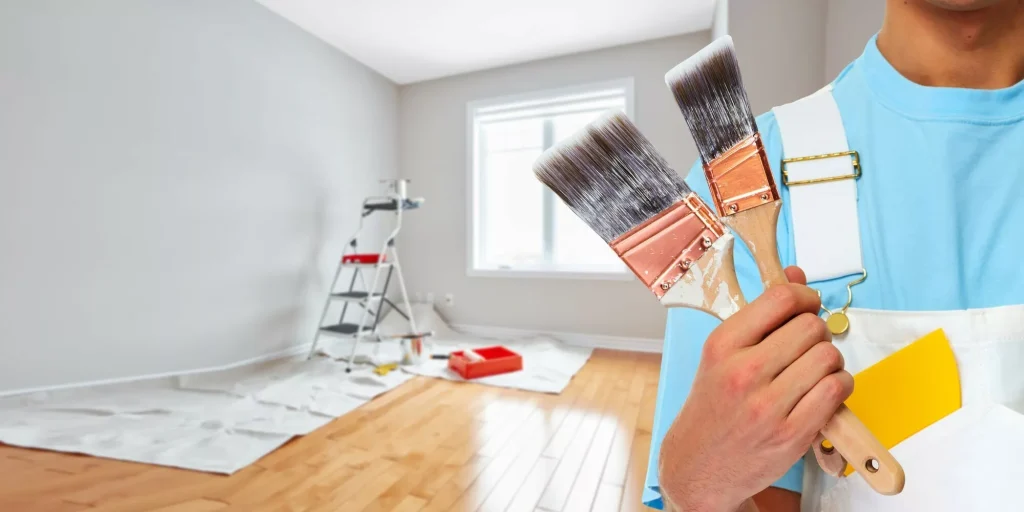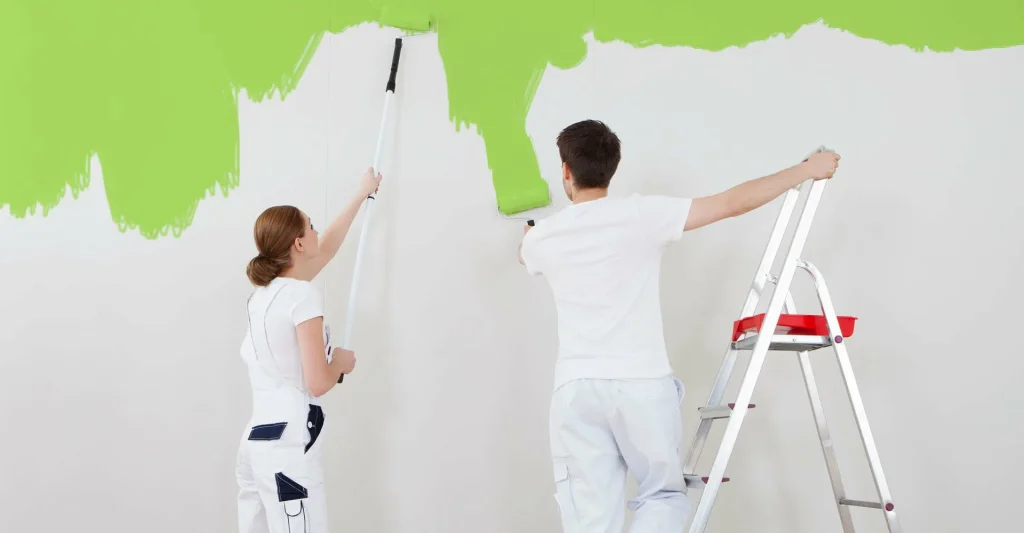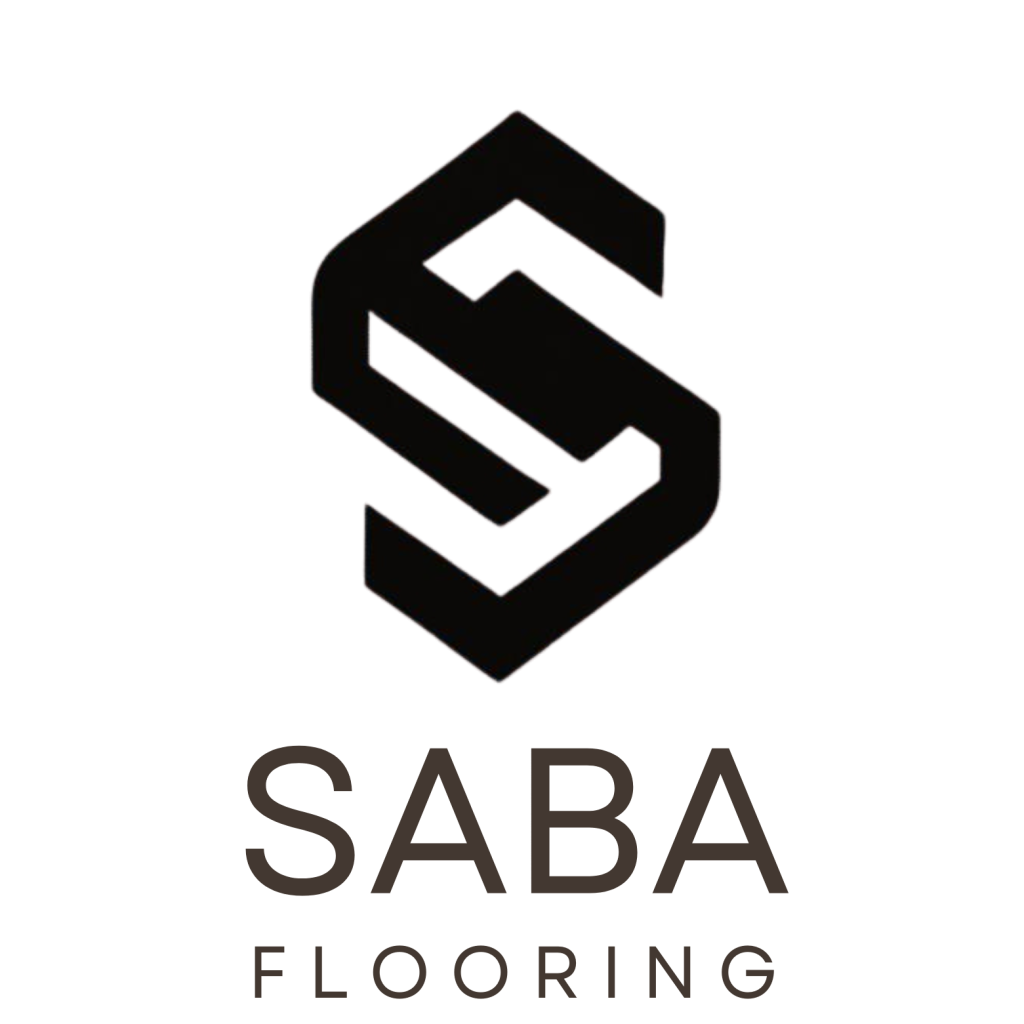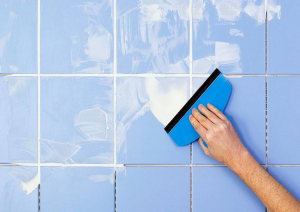Choosing the right paint finish can be just as important as selecting the perfect color. The finish affects the durability, appearance, and overall look of the painted surface. Two common finishes—flat and satin—offer distinct advantages and disadvantages depending on the space, use, and maintenance requirements.
Here’s a breakdown of the pros and cons of using flat vs. satin paint finishes to help you choose the best option for your project.
Flat Paint Finish

Before you start grouting, it’s important to choose the correct type of grout for your tile installation. Grout comes in various forms, and selecting the right one depends on the width of your grout lines, the type of tile, and the location of the installation (e.g., bathroom, kitchen, or outdoor area).
Types of Grout:
Flat paint (also known as matte) has no sheen and provides a smooth, non-reflective surface. It’s typically used in areas where you want to minimize imperfections or create a soft, velvety look.
Pros of Flat Paint:
- Hides Imperfections:
- One of the biggest advantages of flat paint is its ability to conceal wall imperfections such as dents, cracks, and uneven textures. The lack of sheen means the light doesn’t reflect off the surface, making blemishes less noticeable.
2. Smooth, Elegant
- Flat paint has a velvety, rich appearance that adds a soft, sophisticated touch to any room. It works particularly well in spaces where you want a serene, calming atmosphere, such as bedrooms or living rooms.
3. Perfect for Low-Traffic Areas:
- Flat paint is ideal for low-traffic areas where durability isn’t as important. It’s commonly used in dining rooms, bedrooms, and ceilings, where the walls don’t experience a lot of wear and tear.
Great for Ceilings:
- Flat paint is an excellent choice for ceilings, as it helps reduce glare and gives the ceiling a smooth, uniform look.
Cons of Flat Paint:
- Not Easy to Clean:
- Flat paint is more susceptible to stains and marks, and it’s difficult to clean without damaging the finish. Scrubbing or wiping flat paint can often leave smudges or remove the paint altogether.
2. Less Durable:
- Flat finishes are not as durable as satin or glossy finishes. It’s more prone to scuffs, scratches, and fading over time, which makes it less suitable for high-traffic areas like hallways or kitchens.
- Can Show Wear Quickly:
- In areas where the walls may be touched frequently, flat paint can show wear and tear more quickly, requiring more frequent touch-ups.
Pro Tip: Use flat paint in areas where you want to minimize imperfections and don’t expect heavy traffic or frequent cleaning.
Satin Paint Finish

Satin paint has a slight sheen that reflects more light than flat paint but isn’t as shiny as semi-gloss or high-gloss finishes. It’s a popular choice for many rooms because of its balance between durability and aesthetic appeal.
Pros of Satin Paint:
- Durable and Easy to Clean:
- Satin paint is more durable than flat paint and is resistant to scrubbing and cleaning. It holds up well in areas that see more traffic or are prone to spills, like kitchens, bathrooms, and children’s rooms.
- Subtle Sheen for a Stylish Look:
- The slight sheen of satin paint gives walls a soft glow without being overly shiny. It adds just enough light reflection to make the room feel bright and clean, but it still has a smooth, elegant appearance.
- Resistant to Moisture:
- Satin finishes are more moisture-resistant than flat finishes, making them suitable for high-humidity areas like bathrooms or laundry rooms.
- Versatile:
- Satin paint works well in a variety of spaces, from bedrooms to high-traffic areas like hallways and kitchens. It’s a good all-around choice for most rooms in your home.
Cons of Satin Paint:
- Shows Imperfections:
- Because satin paint has some sheen, it can highlight imperfections like bumps, cracks, or rough textures on walls. The reflective quality of the finish makes blemishes more noticeable.
- Touch-Ups Can Be Difficult:
- Touching up satin paint can sometimes result in visible patches where the new paint doesn’t blend perfectly with the old paint. This is due to the difference in sheen between the freshly applied paint and the older paint.
- More Reflective:
- While the sheen of satin paint is subtle, it can still create light reflection that may be unwanted in certain rooms or on certain surfaces, such as ceilings.
Pro Tip: Satin paint is a versatile choice that works well in high-traffic or moisture-prone areas. Use it in places where durability and ease of cleaning are priorities.
When to Use Flat Paint
– Low-Traffic Areas: Bedrooms, formal dining rooms, and ceilings are perfect places for flat paint since they don’t experience frequent contact or messes.
– Hiding Imperfections: If your walls have visible imperfections, such as cracks or uneven textures, flat paint can help mask these flaws and create a more even appearance.
– Creating a Cozy Atmosphere: Flat paint provides a soft, velvety finish that’s ideal for spaces where you want a calm, understated look.
When to Use Satin Paint
– High-Traffic Areas: Kitchens, bathrooms, hallways, and children’s rooms benefit from the durability and easy-to-clean surface of satin paint.
– Moisture-Prone Areas: Because it’s more moisture-resistant, satin paint is perfect for areas with higher humidity, like bathrooms or laundry rooms.
– Balanced Sheen and Durability: If you want a finish that’s durable but still provides a soft glow, satin is a great choice for both functional and decorative purposes.
Final Thoughts: Which Finish Is Best for You?
When choosing between flat and satin paint finishes, consider the specific needs of the room you’re painting. Flat paint is perfect for creating a smooth, elegant look in low-traffic areas where imperfections need to be minimized. On the other hand, satin paint offers more durability, making it ideal for high-traffic or moisture-prone areas that require frequent cleaning.
By understanding the pros and cons of each finish, you can choose the one that best suits your space, providing the right balance of durability, appearance, and maintenance.





